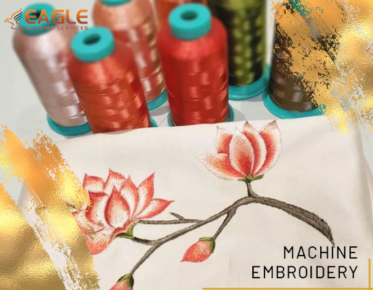Why is Digitizing for Machine Embroidery So Expensive?
Embroidery digitizing is a crucial step in transforming artwork into a format that embroidery machines can understand. This process involves converting images into a series of commands that guide the machine on how to stitch the design. However, many people find the cost of digitizing for machine embroidery to be surprisingly high. Understanding the reasons behind these costs can help businesses and individuals make informed decisions when investing in embroidery digitizing services.
The Complexity of the Digitizing Process
One of the primary reasons for the high cost of embroidery digitizing is the complexity involved in the process. Digitizing is not just about tracing an image; it requires a deep understanding of how stitches will interact with different fabrics and how the design will appear once embroidered. This complexity demands skilled professionals who can anticipate potential issues such as thread breakage and design distortion. Companies like Eagle Digitizing employ experienced digitizers who are adept at using sophisticated software to ensure the highest quality output.
Skilled Labor and Expertise
Embroidery digitizing requires a high level of expertise and technical skill. Skilled digitizers are proficient in using various digitizing software and have a keen eye for detail. They must understand the nuances of different embroidery techniques and how to apply them effectively. This expertise comes at a cost, as companies need to compensate their digitizers fairly for their specialized skills. Eagle Digitizing, for instance, prides itself on having a team of skilled digitizers who deliver accurate and efficient results【4:0†source】.
Quality Assurance and Testing
Another factor contributing to the cost is the rigorous quality assurance process. Before a design is finalized, it undergoes multiple rounds of testing to ensure it sews out perfectly on the intended fabric. This involves creating sample sew-outs and making necessary adjustments to the design. Companies like Eagle Digitizing offer a comprehensive quality check to minimize issues such as thread breakage and ensure smooth sew-outs【4:0†source】.
Turnaround Time and Customer Service
Many embroidery digitizing services offer quick turnaround times, which can also affect pricing. Fast delivery requires efficient processes and sometimes additional resources to meet tight deadlines. Eagle Digitizing, for example, guarantees a turnaround time of 2 to 24 hours without compromising on quality【4:0†source】. Additionally, providing excellent customer service, including free revisions and format conversions, adds value to the service but also contributes to the overall cost.
Technological Investment
The technology used in embroidery digitizing is another significant cost factor. High-quality digitizing software and equipment are essential for producing precise and reliable designs. These tools require substantial investment and regular updates to keep up with industry standards. Companies must also invest in training their staff to use these technologies effectively, which further adds to the cost.
Market Demand and Customization
The demand for customized embroidery designs has increased, leading to a rise in the need for digitizing services. Customization requires more time and effort, as each design must be tailored to the client's specific requirements. This level of personalization is a premium service that naturally incurs higher costs. Moreover, the competitive nature of the market means that companies must maintain high standards to attract and retain clients, which can drive up prices.
Conclusion
While the cost of embroidery digitizing may seem high, it reflects the complexity, skill, and resources required to produce high-quality designs. Companies like Eagle Digitizing offer a range of services that ensure precision, efficiency, and customer satisfaction. As the demand for personalized embroidery continues to grow, investing in quality digitizing services can provide significant value and enhance the final product. As technology advances and the industry evolves, it will be interesting to see how these factors influence the cost and accessibility of embroidery digitizing services in the future.


.png)
